EMPOWERING WOMEN ENTREPRENEURS IN SUSTAINABLE PRODUCT TRAINING AND SELF-EMPLOYMENT

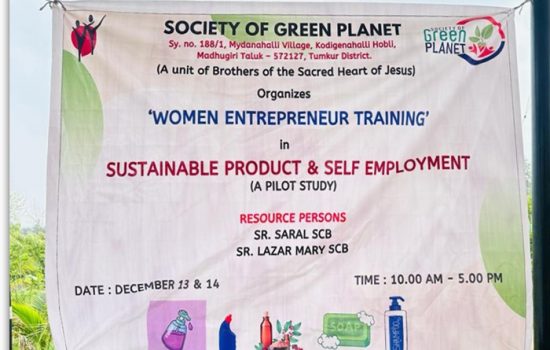

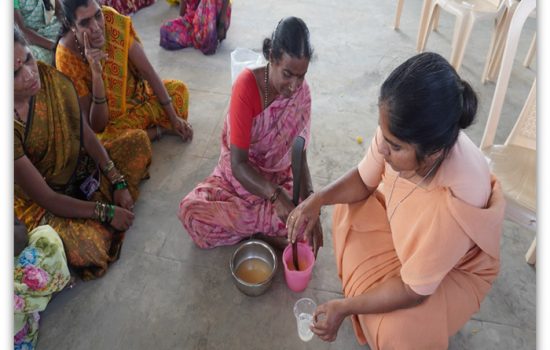
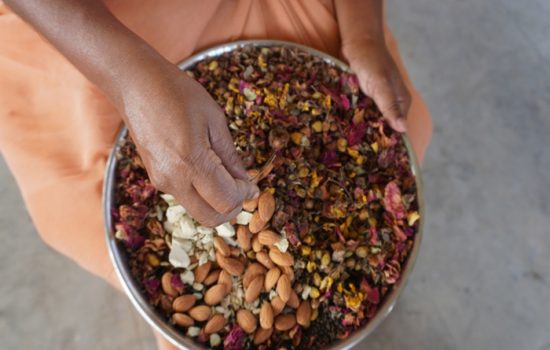
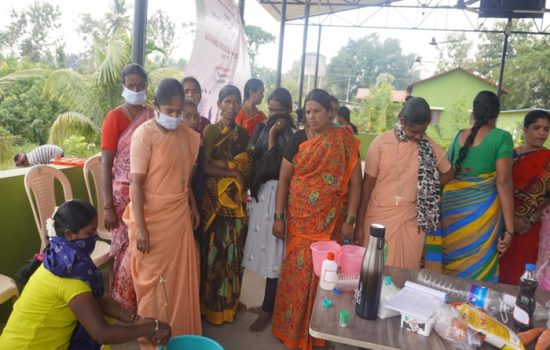
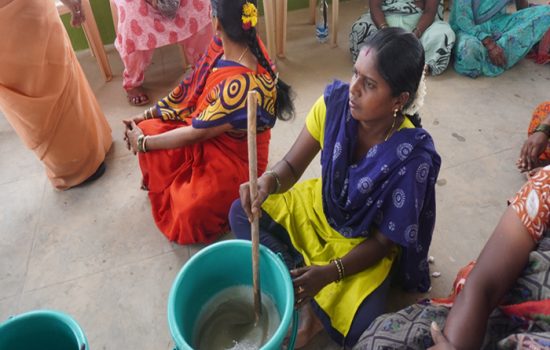
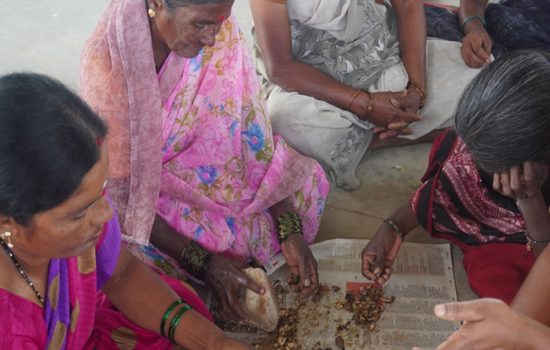
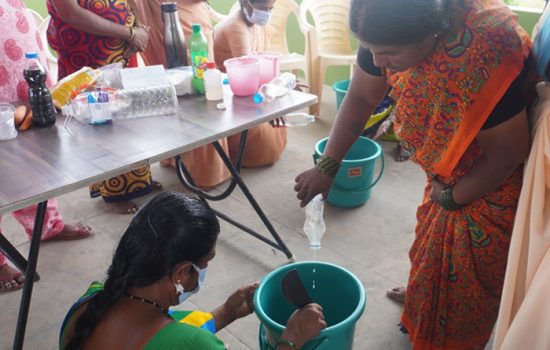
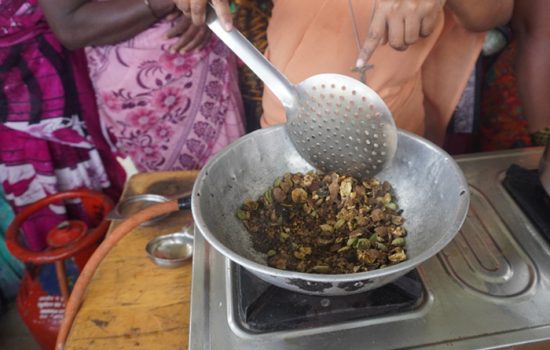
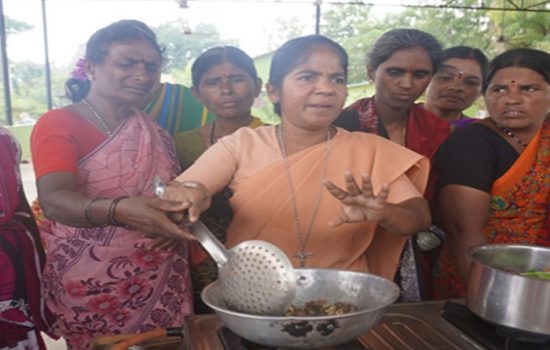
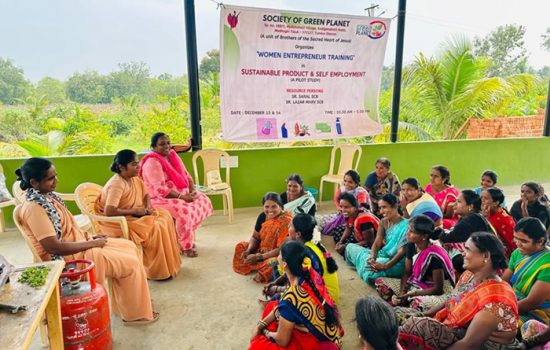
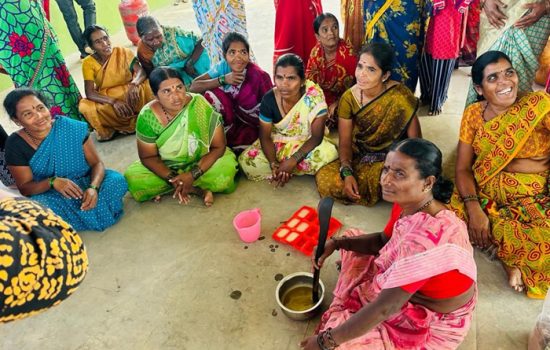
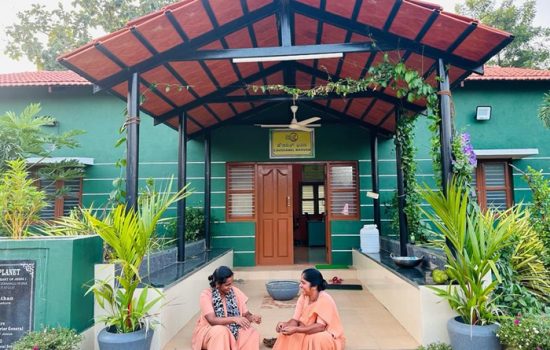
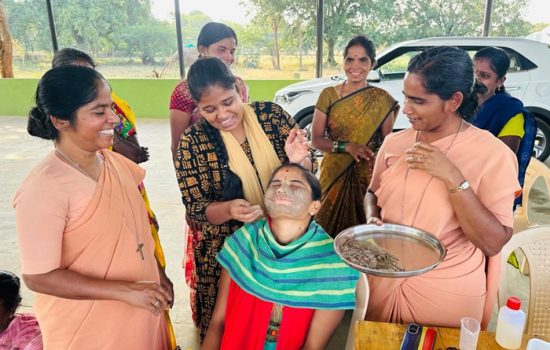
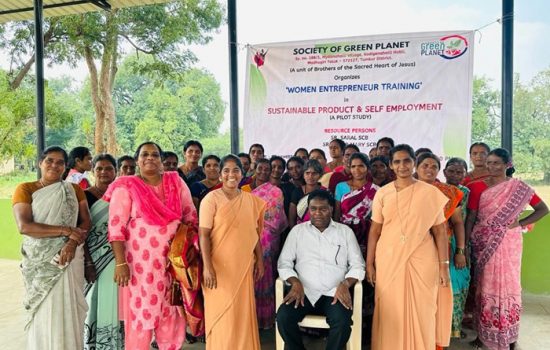
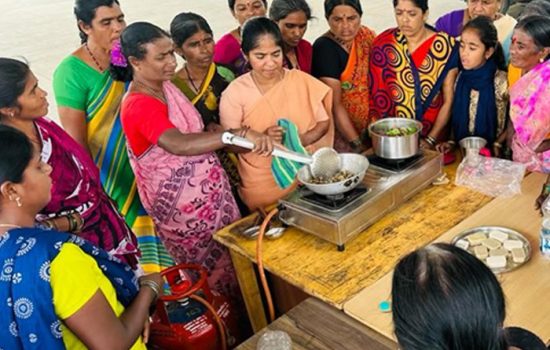
Previous
Next
INTRODUCTION:
On the 13th and 14th of December 2023, a transformative seminar was organized to empower women entrepreneurs by providing them with essential training in sustainable product development and fostering self-employment. The event aimed to equip women with the knowledge and skills necessary to thrive in the world of entrepreneurship while emphasizing the importance of sustainability in product creation.
VENUE
The seminar took place at Society of Green Planet, Mydanahalli a conducive space that accommodated a diverse group of aspiring women entrepreneurs. The atmosphere was charged with enthusiasm and anticipation as participants gathered to learn and engage in empowering discussions.
TRAININGS CONDUCTED:
- Organic Soap
- Organic Shampoo
- Toilet Bowl Cleaner – Harpic
- Soap Oil
- Tooth Powder
- Phenol
- Organic Oil
- Organic Face Mask
- Pain Relief Oil
Integrated Farming & Livestock Development
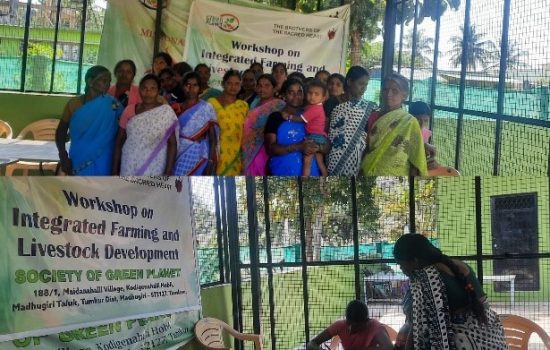
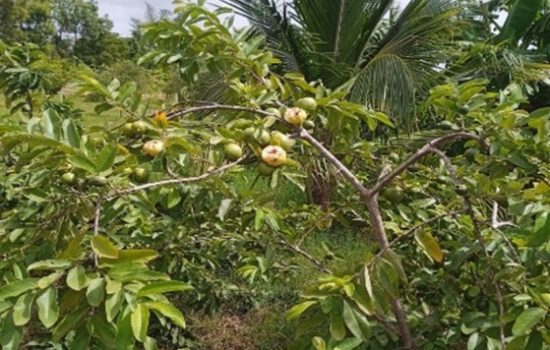
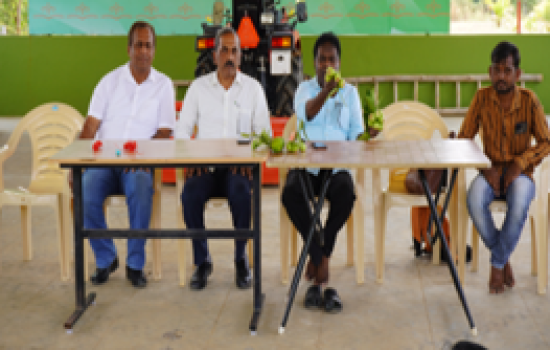
Previous
Next
- For small farmers it is a natural, interdependent thing in livestock management.
- Based on crops and animals it is balanced
- It maximizes utilization of nutrients and products.
- It also minimizes negative impact on environment and production.
- It is a method of combining crop cultivation with livestock management. They are complementary to each other.
- It is economically viable & sustainable and above all profitable.
- The session focuses on recycling organic waste and utilizing it as an input for different farming components. Farmers learn about the importance of nutrient cycling and how to manage livestock manure, crop residues, and other organic materials to improve soil health and fertility.
- The session teaches the skills and knowledge required in various agricultural disciplines. Farmers learn and develop skills related to crop production, livestock management, aquaculture, agroforestry, and other associated activities.
- Integrated farming emphasizes the efficient utilization of resources available on the farm. Farmers learn to optimize land, water, nutrients, and other resources by integrating various components in a synergistic manner. This leads to improved resource management skills and increased productivity per unit of land and resources.
Rainwater Harvesting
- Rainwater harvesting projects often involve community participation and cooperation. People have learned to work together towards a shared goal, fostering a sense of community spirit. Through collective efforts, communities learn to design, implement, and maintain rainwater harvesting systems, promoting teamwork and collaboration.
- Rainwater harvesting educates the villagers about sustainable water management practices. People learn how to collect, store, and utilize rainwater effectively. They understand the principles of water balance, optimizing water use, and minimizing waste. This knowledge helps in making informed decisions about water usage and contributes to long-term water sustainability.
- Rainwater harvesting fosters a sense of environmental stewardship and responsibility. Individuals learn about the impacts of water scarcity and the role they can play in conserving water resources. They become more conscious of their water footprint and the need to protect natural ecosystems by reducing reliance on groundwater or surface water sources.
- The rainwater harvesting session involved practical skill development. Individuals learn about various components and techniques used in rainwater harvesting systems, such as rooftop collection, guttering, filtration, storage tanks, and distribution systems. These technical skills can be useful for both personal use and potential employment opportunities related to water management.
- Rainwater harvesting has encouraged individuals to become more resilient and adaptable to changing climatic conditions. As they experience the benefits of having an alternative water source during dry spells or water shortages, they understand the importance of adapting to climate variability and reducing reliance on conventional water sources.
- Rainwater harvesting has promoted awareness of water quality and hygiene practices. Individuals learn about the importance of maintaining clean storage tanks, using appropriate filtration methods, and ensuring safe water usage. This knowledge helps in preventing water-borne diseases and promoting overall health and well-being.
- Overall, we have offered a holistic learning experience that encompasses environmental, social, technical, and practical aspects, fostering a deeper understanding of water conservation and sustainable water management.
- Given the scarcity of water resources it has become a necessity for humans and animals.
- The density of population and cattle demands large saving of rainwater.
- Unused, non – farming dry land is an ideal place to collect / channelize rainwater in the villages.
- Collecting rainwater in lakes, wells and ponds is a custom in the villages.
- Traditional catchment areas enrich water resources and enhance agriculture.
- With the help of experts, we instruct the villagers, especially the leaders, to adapt to rainwater harvest.
- Small farmers were trained to create low-cost small ponds on their land.
- They are taught to make 5x4x1.5m tanks capable of collecting 30,000 litres of seasonal rain.
- It’s mostly used for kitchen garden and for their domestic animals.
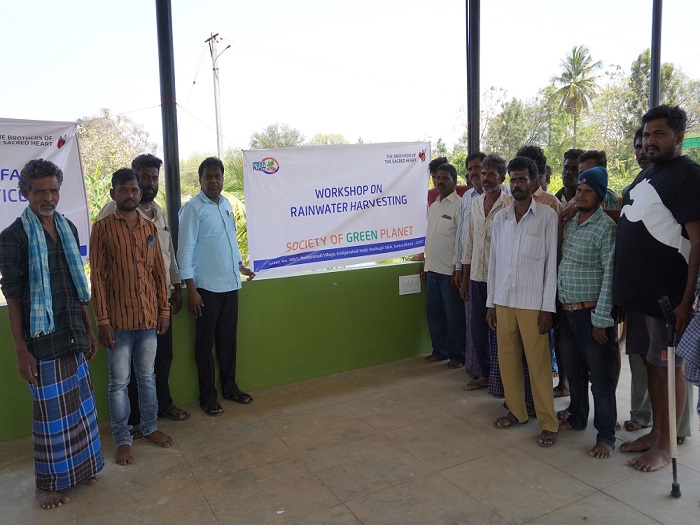

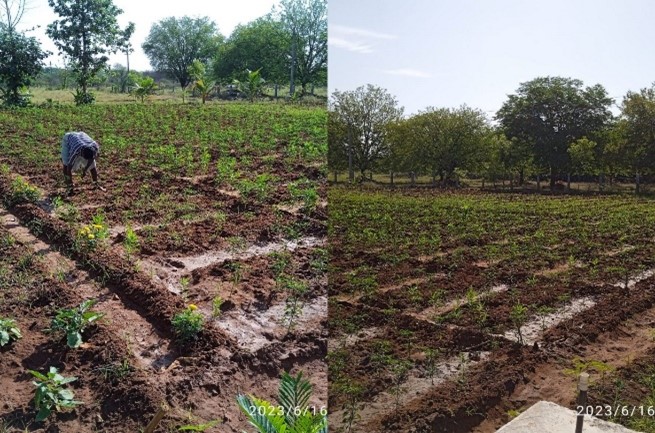
Previous
Next
Cattle Management & Insurance
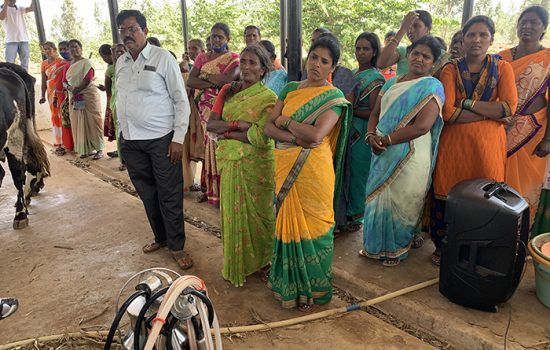
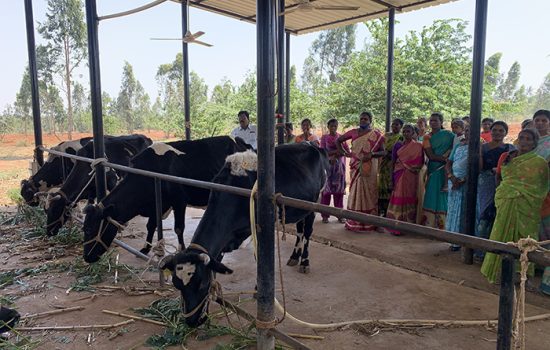
Previous
Next
- Remote rural settings and the non-availability of vet hospitals pose a great threat to cattle management.
- Local breeds have good immunity and resistance to climate change; therefore, they are less at risk.
- Cattle insurance protects farmers from financial losses.
- For small farmers, the purchase of cattle is expensive, and in the event of animal death, the farmers will fall into traps.
- It provides comprehensive protection from theft, loss, and accidents that are common or prevalent in this area.
- It is a complex system that involves a scientific and strategic approach to livestock development.
- We teach the small farmers to maintain a simple handwritten record of livestock from birth, all vaccinations, reproduction, production of milk, meat, butter, ghee, etc.
- The farmers are taught record-keeping using a small booklet.
- The session includes knowledge of their feeding requirements, housing conditions, breeding management, and health care practices. Understanding cattle behavior and needs helps in providing appropriate care, ensuring optimal production, and maintaining animal well-being.
- We educated ourselves about cattle management, including common diseases, preventive measures, and health management practices for cattle. This includes learning about vaccination schedules, parasite control, disease recognition, and treatment protocols. Knowledge of cattle health management helps in maintaining herd health, reducing disease incidence, and improving productivity.
- Education in cattle management covers aspects of breeding and reproduction, including understanding reproductive cycles, heat detection, artificial insemination (AI), and herd genetics. These skills enable farmers to make informed decisions regarding breeding practices, optimizing reproductive efficiency, and genetic improvement within their herds.
- Teaching about cattle management includes knowledge of feed and nutrition requirements for different stages of cattle production. This involves understanding feed formulation, ration balancing, grazing management, and supplementation strategies. Proper feed and nutrition management contribute to optimal growth, milk production, and overall herd performance.
- Teaching about cattle insurance focuses on understanding the principles of livestock insurance, risk assessment, and financial planning. This includes learning about the different insurance products available, assessing risk factors, calculating premiums, and understanding the claims process. Knowledge of cattle insurance and risk management assists farmers in protecting their investments and mitigating financial losses in the event of unforeseen events or disasters.
- The learning outcomes provide the villagers with the necessary knowledge and skills to effectively manage cattle, enhance productivity, promote animal welfare, and make informed decisions in the livestock industry.
